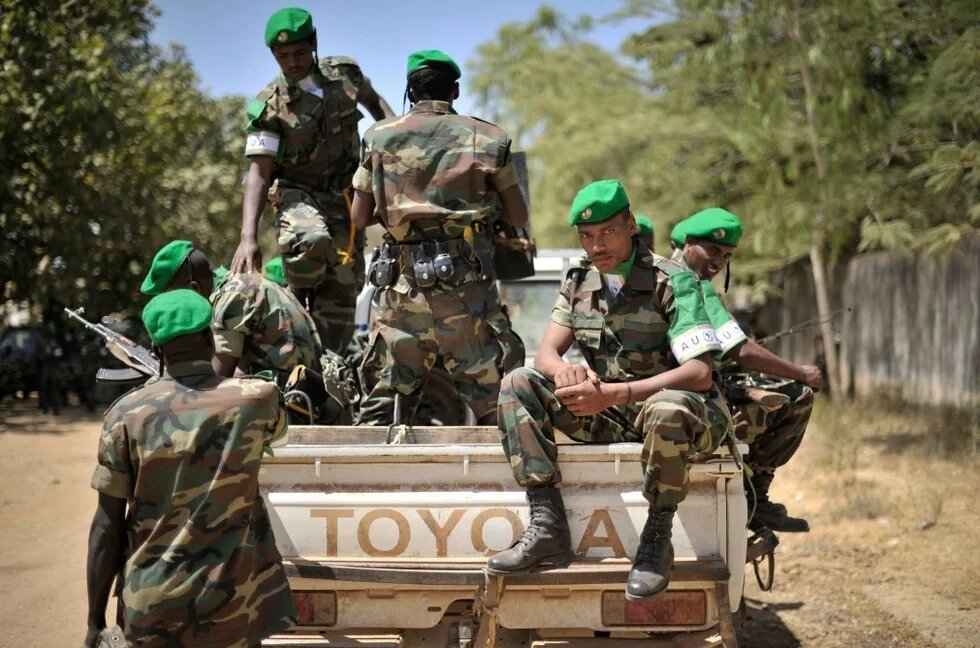Today's preference for ceasefires over settlements reflects a loss of confidence in achieving lasting peace. However, inclusive mediation, backed by political will, can transform even intractable conflicts. The Horn of Africa is a key front in this struggle.

Introduction: The Age of the Endless Ceasefire
In today’s conflicts, the announcement of a ceasefire is often celebrated as if it were peace itself. But these pauses in fighting – fragile, temporary, and often immediately violated – rarely resolve the disputes that caused the war in the first place. From Gaza to Sudan to the Thai-Cambodian border, ceasefires have become the default end point of international diplomacy, rather than the first step in a sustained peace process.
This is not only a symptom of our pessimistic political era; it is also a warning that the very idea of peace as a just, durable settlement is slipping out of the global imagination. The Horn of Africa – one of the world’s most volatile regions – offers a revealing case study of this transformation, showing how principled, inclusive mediation has been displaced by transactional, interest-driven deals that manage conflict but do not resolve it.
The Rise – and Fall – of Principled Peace
In the 1990s and early 2000s, a wave of optimism followed the end of the Cold War. The United Nations (UN), regional bodies, and major powers pursued a 'liberal peace' model, aiming to end wars through democracy, inclusion, and the rule of law. African-led institutions such as the African Union (AU) and the Intergovernmental Authority on Development (IGAD) embraced this approach, building mediation frameworks that treated peace as much more than the absence of violence.
The 2005 Comprehensive Peace Agreement (CPA) in Sudan was emblematic of this era. Brokered by IGAD with AU and international backing, it combined security arrangements, power- and wealth-sharing, and democratic transition in a process that sought national ownership and international legitimacy. Though imperfect, it was rooted in the belief that peace required addressing political grievances, not merely silencing the guns.
The New Normal: Transactional Peacemaking
Two decades later, that model seems a remote aspiration. Globally, the appetite for ambitious peacebuilding has waned. In its place, ceasefires have proliferated – short-term truces, humanitarian pauses, and ad-hoc security understandings – but they are rarely linked to sustained political negotiations.
Under President Donald Trump, the United States has abandoned painstaking negotiation in favor of rapid bargaining, centering on a combination of commercial deals, strong-arming concessions, and a high profile event at which the contending leaders shake hands and nominate Trump for the Nobel Peace Prize. This kind of plutocratic, populist peacemaking didn’t spring from nowhere. Trump’s style just accentuates an existing trend.
The transactional turn has been evident in the Horn of Africa for a decade. Authoritarian leaders have always preferred bilateral secret talks, and the international environment became much more permissive for them. In 2018, Ethiopian Prime Minister Abiy Ahmed and Eritrea’s Isaias Afwerki made a secret personal pact that bypassed the UN, AU and Ethiopia’s own institutions. Presented to the world as a bold peace initiative, the secret deal ended up leading to other wars and triggering severe regional instability.
Authoritarian leaders have always preferred bilateral secret talks, and the international environment became much more permissive for them.
The United Arab Emirates didn’t initiate the contacts between Abiy and Isaias, but it greased the way to deal. And the agreement that ended the fighting in Tigray in 2022 is a ‘Permanent Cessation of Hostilities’ – with thin commitments to human rights, democracy, or redressing the roots of the war.
Gulf and Middle Eastern states have since filled mediation roles once dominated by multilateral organizations. Backed by deep financial resources and security leverage, these actors favor elite bargains and security pacts over inclusive national dialogues. Their goals are to stabilize allies, secure strategic interests, and contain threats – not to transform the political relationships that drive conflict.
After the 2019 peaceful revolution in Sudan, the negotiations to set up a new government were brokered by the U.S., Britain, Saudi Arabia and the UAE – with the AU envoy providing a public face. Before long, the Arab states were clearly in the driving seat. When Sudan’s current war broke out in April 2023, talks convened by the U.S. and Saudi Arabia aspired only to a ceasefire. The AU and IGAD have been sidelined, and the UN has lowered its ambitions to pushing for humanitarian access.
We see similar patterns in South Sudan and Somalia – negotiations to scale back on the fighting without formulating lasting solutions. This is the ‘negative peace’ trap – silencing the guns but not listening to the voices of the people who demand more.
Why Ceasefires Fail
Most agreements to cease hostilities are not even written down and are transient. More formalized ceasefires and humanitarian pauses are the most likely to be followed by renewed violence. Best practice for a ceasefire, as laid out for example in the handbooks for the UN’s mediation support unit, includes third-party monitoring, mechanisms for handling complaints, steps towards consolidating the end to violence such as exchanging prisoners of war and hostages or withdrawing heavy weapons to designated zones, and building confidence for political talks. Without this – and especially without a credible political process – a truce may just be a breathing space for combatants to regroup, rearm, and reposition.
By definition, belligerents believe the worst of each other. Ending a war requires building trust. The mediator tries to do this by fostering direct communication between the warring leaders, and through robust mechanisms for monitoring, verification and enforcement. For as long as the two sides continue to distrust each other, they must have confidence in a reliable third-party mechanism. And if peace is to last, the causes of the war and the grievances that accumulated during the fighting must be addressed.
Most worrying is that peace without democracy and human rights, that legitimizes and rewards those who led the fighting, is not sustainable.
The United Nations’ New Agenda for Peace and the African Union’s Peace and Security Architecture were designed with these goals in mind, along with early action to prevent armed conflict from breaking out in the first place.
Ad hoc transactional peacemaking has discarded these hard-learned lessons and bypassed the mechanisms that made them work. To be clear, multilateral peacemaking was always imperfect – it seemed time-consuming and cumbersome, and large UN peacekeeping operations were expensive and often ineffective. But the alternative of fragmented mediation initiatives, floated by rival powers candidly pursuing their own particular interests, without the apparatus for monitoring and verification, has a far worse record.
Most worrying is that peace without democracy and human rights, that legitimizes and rewards those who led the fighting, is not sustainable. Some leaders may wish to return to the era when princes could sign pacts to divide countries and decide the fate of the people who live there, as though citizens are mere tenants who can be served an eviction order. We have seen this in the Horn of Africa – and it’s a future that doesn’t work.
Reclaiming Peace in a Pessimistic Era – Starting in the Horn of Africa
The Horn of Africa might seem the toughest pace to reverse the current trend towards fast, transactional and performative peace. It has complex conflicts that put down deeper roots with every cycle of violence, and it has outsiders who meddle for cynical gain.
By the same token, there’s an unparalleled experience of peacemaking in the region and with a generation of diplomats and peace organizations. We know what works and what doesn’t. The international context may have changed, but the basic formula for peace endures.
At the heart of peace is legitimacy. Peacemaking repudiates the mantra that might is right. Every state in the Horn of Africa is a member of the African Union, and in joining the Union it committed itself to democracy, human rights and inclusion of diverse groups within its nation. Since the African continental organization was founded 62 years ago, its raison d’être is cooperation – Africa rises together, or falls together.
And by working together, in accordance with the agreed principles, developing and applying a growing toolbox for conflict resolution, democratization and transitional justice, Africa has shown that it can end wars. Its mediators understand local political cultures, they can integrate their efforts with the UN, European Union, Arab League, and others, reducing duplication and competition. They know that mechanisms such as national dialogue can move a post-conflict country towards democracy. When the African Union shows unity and resolve, it can make outside powers follow.
Conclusion: Beyond the Ceasefire Mindset
Today’s preference for ceasefires over settlements reflects a loss of confidence in real peace. Such despair has no historical basis. Even the most intractable conflicts can be transformed when inclusive, principled mediation is backed by political will.
The Horn of Africa stands at the front line of this struggle. Its fate will be a test not only of African multilateralism, but of whether the world can remember that the end of war is not the absence of fighting, but a collective effort to right wrongs and build more just and inclusive societies.
What’s needed is a restored moral ambition. Peace with justice must remain the goal, even in a world skeptical of grand settlements.

